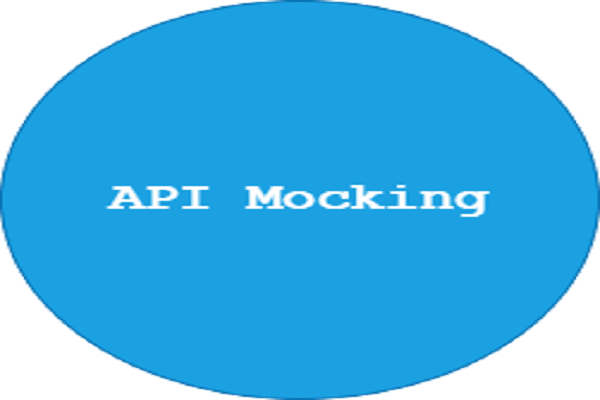How to Develop an API Architecture

Over the years, APIs have gradually gained popularity in major businesses and enterprises. The main reason is that organizations have seen a tremendous increase in IoT devices and mobile applications, which mostly rely on backend interactions. Therefore, an API can be considered a crucial business resource that most modern enterprises can benefit from.
According to recent statistics, organizations have seen value in their digital operations through APIs. These include businesses operating in the banking and finance sector, media and entertainment industries, and automotive industries. These businesses have achieved tremendous growth due to the continued use of APIs in their operations.
In the past, huge enterprises started using APIs in their digital operations to grow and diversify their businesses and maximize their profits. SMEs have now joined the plan and have started using APIs in their operations to remain competitive and relevant in this digital space.
The dilemma arises for business owners when trying to figure out best practices to develop APIs for their digital channels and maximize their profits. This article will guide business owners and stakeholders on building a state of art API architecture that would suit their business digital strategy.
Table of contents
- Concept of APIs
- Understanding API architecture
- API architecture components
- Designing APIs
- Core goals of API design
- API design architectural styles
- API architecture layers
- Conclusion
Concept of APIs
API is a short form for Application Programming Interface. It is an entry framework that allows the developers to communicate with a given application. It is evident that in this era, applications, whether mobile or web, can never be standalone and often need to interact and respond to each other.
The following points explain why the use of APIs is important for organizations:
- API allows access to application's data and logic that can be used for monetization purposes.
- The API uses the functionality of the application.
- Allows microservices interactions.
- It connects different ecosystems such as B2B and C2B.
- It offers powerful integrations.
- It enhances the development of new features in business.
- It opens up new opportunities for growth and innovations.
Understanding API architecture
API architecture refers to the process where a developer makes a decision on the methodology and the process to be used during the development of the API and how the API will run. It defines the components and their logical interactions.
The architectural decisions about the API being developed have to be made before the actual design and development. It includes the technical requirements of the API, the tier, the API lifecycle management, operations and security, and finally, the API monetization.
API architecture components
Below are the essential components of API architecture:
API gateway
This component is mainly concerned with security, caching, and orchestration purposes. In simple terms, it acts as the single gateway into the internal API architecture.
It serves the following functions:
- It offers load balancing capabilities and partitioning of microservices.
- It assists in monitoring and filtering traffic from various devices such as mobile, web, or B2B.
- It contains gateway layers that assist in exposing third-party APIs, microservices, and VMs found on the application server provider.
API portal
This component acts as middleware between API consumers and providers.
It has the following functions:
- Assists in the analysis of the API.
- It is responsible for the documentation of the API.
- It is essential in the marketing of APIs.
- It dictates how an API is exposed to internal team members, partners, or even third-party developers.
Designing APIs
It involves planning and making decisions on which API architecture to use during the API development. API design is usually the initial stage in the API development process.
At this stage, the developers have to deal with API complexity, error handling and prevention measures, consistency, and performance of the API. It means that API design and architecture are significant and define the outcome of the API later on.
Factors to consider when performing an API design
- API design goals should be aligned with the goals of the given business.
- The required resources have to be available, and proper management ensured.
- The use cases supported by the API should be considered.
- The target audience and users should be predefined.
- The API value addition, channels, and ensure developers’ motivation to encourage its usage.
- The applications intended to make use of the developed API should be beneficial to the end-users.
Best practices when designing an API
The following best practices should be considered when designing an API:
- An API should draw its focus on its consumption and ensure consistency.
- A clear statement on the value the API offers should be well presented to the developers.
- Early optimizations should be avoided, and too much complexity should not be given to the developers.
- The APIs security has to be ensured with strict rules imposed on it.
- An API should have excellent error handling.
Core goals of API design
Every organization defines unique requirements of what their API should be designed like. Below are objectives each API design tends to achieve:
Consistency
The API should have a consistent standard that directs each application interaction. There should be consistency when exchanging essential resources in a given institution, enhancing transparency in all the operations.
Security
An API should have an extra security layer that ensures all the requests are not directly made to the server. This is important since it ensures there is minimal chance for a breach or unauthorized access to the server.
Scalability
All organizations strive to increase and expand their operations. This means that the API should be designed to allow scalability to handle a growth in the products offered, security needs, or even an increase in data needs.
Collaboration
API should ensure components' reusability in application development. This saves development time and prevents the developers from performing redundant and repetitive tasks. This also assists the developers in focusing on trying and testing new tools, which is more valuable to the organization. It also helps the developers hire third-party companies to handle more complex tasks as they focus on the organization system.
Value addition
Through the use of APIs, organizations can get value and generate more revenue. In most cases, APIs assist in attracting new clients and also bringing more value to the existing ones. The organization can also monetize the use of its API software. The software can be integrated with other modules of the organization, such as sales and marketing, making other operations more efficient.
API design architectural styles
Web API
In this design, the API can be accessed via the web, which utilizes the HTTP protocol. It also works well with RESTFUL services built on HTTP using languages like ASP.NET and Java.
This API is designed to only work on web browsers and cannot be implemented on mobile platforms. It can offer services to numerous devices and also in distributed systems.
Pragmatic REST
Although it is a sophisticated and Web-centric way of designing APIs, most developers prefer it with internet service API. It utilizes URI instead of WSDL, and it is transport-specific, meaning that it only supports HTTP.
Hypermedia APIs
They use HTTP, RESTful, and URI standards. It is also a web-centric API that is high in scalability. Its main advantage is that the server that hosts it generates a list of potential options that the client can access through HTTP requests later.
Event-Driven
They are the most used APIs in IoT devices and mobiles applications such as video chats, messaging applications, and mobile games. This API design differs from other API designs. Either the server or client is assigned as the actor and the other party assigned as the one acted upon in the other systems.
However, in Event-Driven design, both the server and the client listen to the new events and respond accordingly. In this design, many small messages are interchanged between the application and backend processes, enhancing performance.
API architecture layers
Information management layer
This layer is where the storage of data happens. It ensures that the APIs deliver a real-time database whereby the accuracy of the data, steady, and reliable data is needed.
Application layer
In the early days, this layer usually stored the applications that the business was running. However, such applications were replaced by microservices architecture that offers good value to a given organization.
Integration layer
In this layer, the API is integrated to ensure synchronous service access between different users and devices.
Interaction layer
This is the most crucial layer since real action occurs here. This is where clients’ applications, developers, and users get a chance to work with the organization applications and data of the organization.
Conclusion
Users will only adopt the use of the given API if it offers the value it intends to do. This would mean the design, architectural factors, and practices covered in this article cannot be overlooked. Business owners and stakeholders should make informed decisions when developing their APIs to meet their needs and add value.
Happy learning!
Peer Review Contributions by: Onesmus Mbaabu











